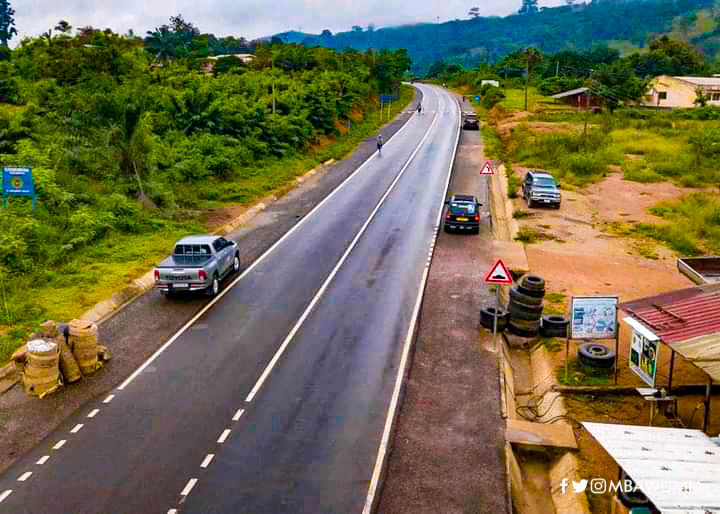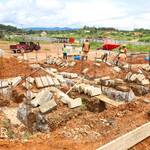Vice-President Alhaji Dr Mahamudu Bawumia has commissioned the completed 56.4 kilometres Hohoe – Jasikan – Dodo Pepeso road project.
He performed the official commissioning ceremony in Kadjebi, to formally open that section to the travelling public.
Dr Bawumia expressed government’s commitment to delivering similar trunk road networks across the country as part of government’s ‘Year of Roads programme’
He said the Year of Roads was not a “Green Book” one but “Fili fili roads” saying that “we have never seen roads constructed and completed by any government as much as we have seen under the government of Nana Addo Dankwa Akufo-Addo and leadership of Kwasi Amoako-Atta as Minister of Roads and Highways.”
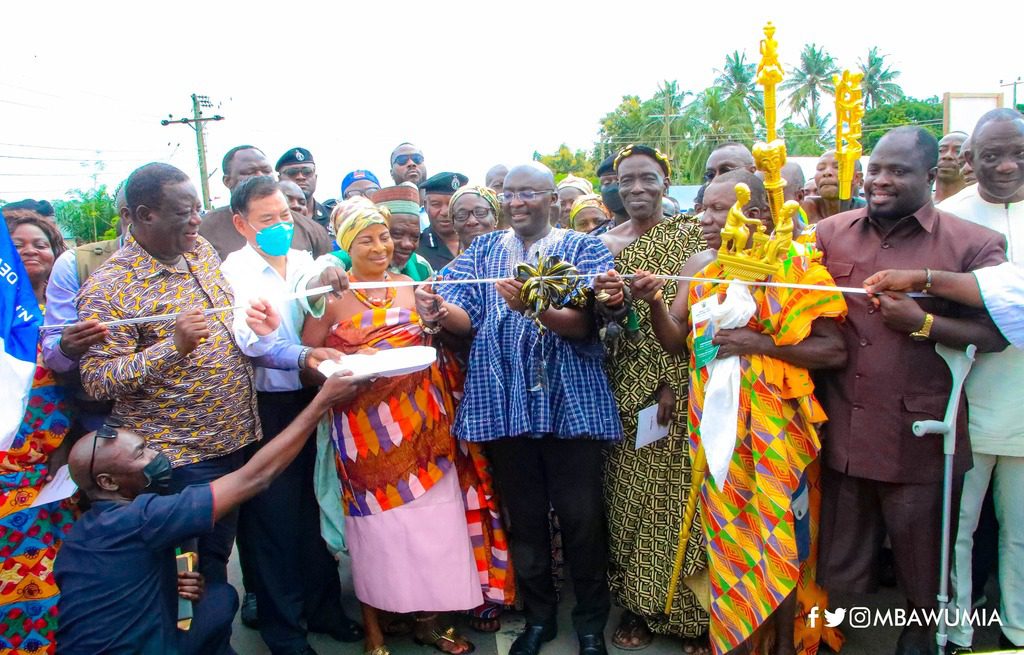
Part of Eastern Corridor Road
He said the Jasikan-Dodo Pepesu Road iss part of the Eastern Corridor Road project which started from the Tema Motorway Interchange with a component of the construction of 67km Tema to Akosombo road with interchanges at Ashaiman and Akuse.
Dr Bawumia said it included the reconstruction of the Asikuma junction to Kpeve which is 40% completed, 53.5km Have to Hohoe-60% completed, and 30km Hohoe to Jasikan which is 80% completed.
50.3km Nkwanta, Oti Damanko to Kpassa road 50% completed
He said the stretch also has 50.3km Nkwanta, Oti Damanko to Kpassa being 50% completed, 94km Oti Damanko to Yendi, 97% completed and 113km Yendi to Gbintiri which is 85% completed adding that government was working on almost every section of the Eastern Corridor Road.
8-Lot of roads at various stages of completion
Dr Bawumia said 8-Lot of roads are currently at various stages of completion under the first phase of the Sinohydro Road project.
109km of trunk roads completed in Volta and Oti Regions since 2017.
He said government had completed 109km of trunk roads under the Ghana Highway Authority within the Volta and Oti Regions since 2017 including the upgrade of 21km Nkonya Wurupong to Kwamikrom road.
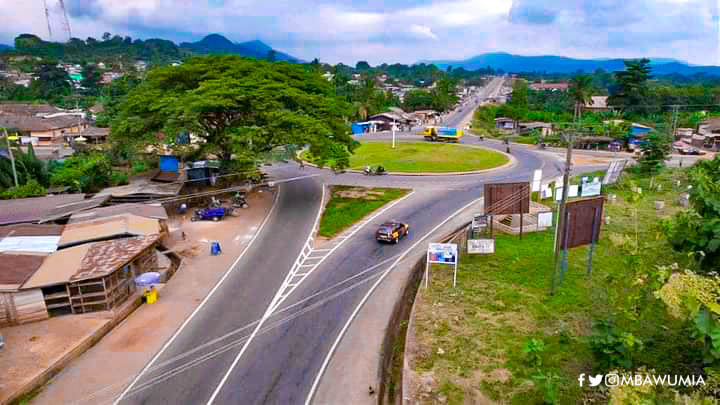
31km of urban roads completed in Volta and Oti Regions since 2017
He said under the Urban Roads, a total of 31km of roads had been completed within the same period such as the asphalt overlay of 14.7km in Hohoe while 27.5km of roads, rehabilitated in the Feeder Road category.
Mr. Kwasi Amoako-Atta, Roads and Highways Minister, said the Ministry through the Ghana Highway Authority, shall make sure that adequate provision in their annual budget to cater for the maintenance of constructed roads was made year after year.
He said the maintenance was necessary to protect the huge investment made by the government.
Mr. Amoako-Atta urged all beneficiary communities to protect their roads and road furniture.
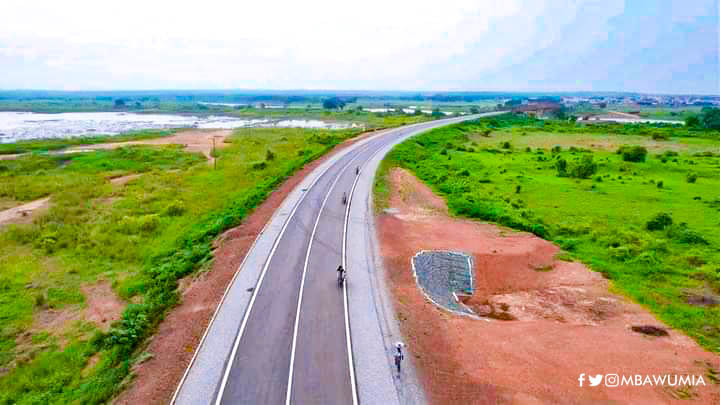
He admonished them to desist from cutting through their roads, establishing washing bays along the length of the roads, damaging road signs and avoid dumping building materials on the roads.
Mr. Amoako-Atta tasked the Municipal and District Chief Executives to make sure that people adhered to maintenance measures and cracked the whip on culprits.
He asked religious and traditional leaders not to entertain culprits and unpatriotic citizens who engaged in activities to damage the roads.
Mr. Amoako-Atta commended the Sinohydro Corporation Limited for putting up a tremendous work.
Dr. Joshua Makubu, Oti Regional Minister, said the contractor working on the Jasikan to Worawora road, Nkwanta to Dambai road and the Dambai township road had given the assurance of returning to work.
He expressed gratitude to the government for the road infrastructure in the Oti region and commitment to the region’s infrastructural development and humanity.
The Hohoe – Jasikan – Dodo Pepesu Road (56.4km) forms part of the Eastern Corridor Road network that links the Southern part of the country to the Northern part and other neighbouring countries.
This Road also forms part of the National Road, N2 of the Ghana Highway Authority Road Classification System.
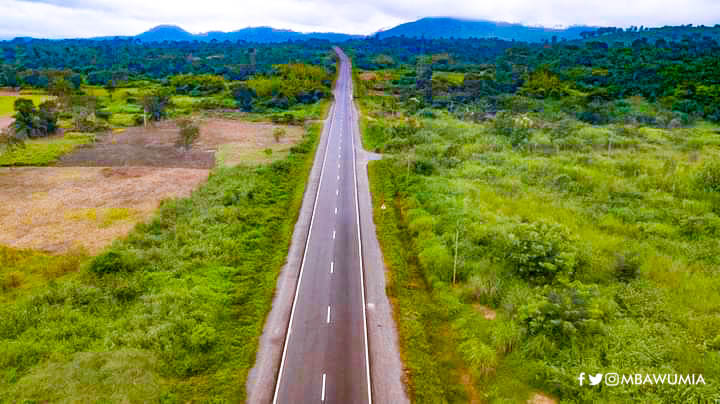
$45.3m Hohoe – Jasikan – Dodo Pepesu Road
The $45.3 million ($45,335,208.43) contract was awarded to Messrs Sinohydro Corporation Limited in August 2018.
Work commenced on December 19, 2020 for a 30-month duration period.
However, thorough assessment of the road facility by the Engineering team led to re-scoping of works for the construction of the 56.4km road.
This re-scoping led to gains in the project cost and these gains enabled the Engineers to replace the initial triple surface dressing with asphaltic surface.
The contractor therefore completed all works under the contract ahead of schedule and final inspection and taking over was done on Thursday, April 21, 2022.
It traverses two districts, namely, the Jasikan District Assembly in the Volta Region and Kadjebi District Assembly in the Oti Region. It also links Togo at a town Called Menuso.
Most of the people along the corridor are farmers who are engaged in the production of staples.
The area’s major economic activities are in the production of cocoa and ginger.
Another major economic activity of towns along the project is trading. The area is also rich in lumber production.
It serves as a major yam route from the Northern Region to the southern part of Ghana.
However years of neglect resulted in the deplorable condition of the road and economic activities got disrupted especially during the rainy season when the road becomes hardly motorable, especially between Jasikan and Kadjebi, which is mostly on embankments, making that section very dangerous.
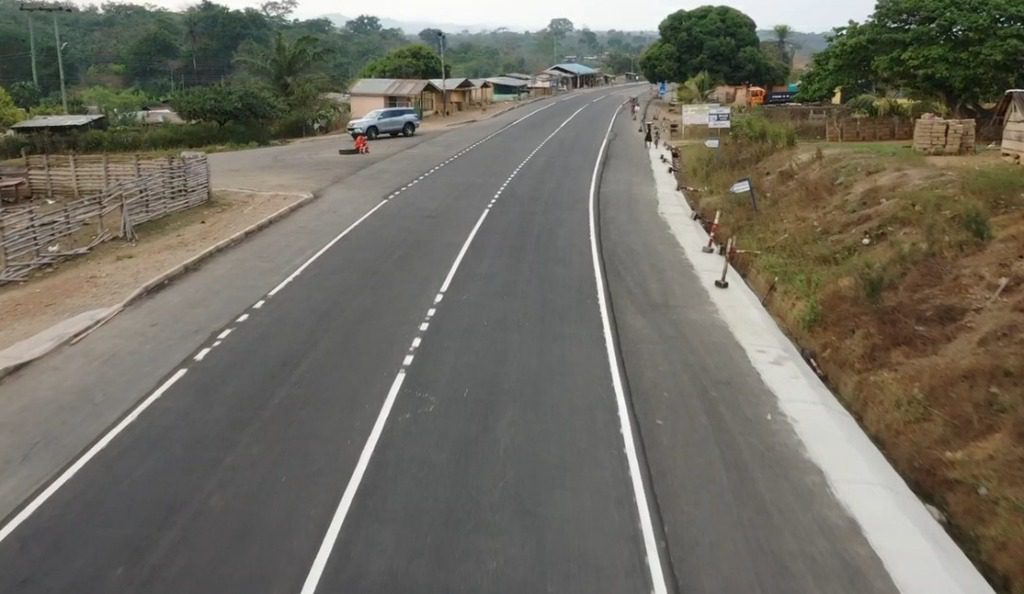
Most sections were riddled with potholes and sectional deterioration with shoving and cracks which required prompt attention.
This resulted in high vehicle operation cost and increased travel time for traversing the road from Jasikan to Dodo Pepesu, Nkwanta and beyond.
Several attempts to reconstruct the road failed in the past and perennial maintenance activities did not help either.
As a result of this, the project road was awarded on contract for the construction of the entire 56.4km to help improve the socio – economic lives of the people and enhance the work of the newly created Oti Region and Districts by improving communications among them.
Scope of works
The works under this project for the first 17km was intended to improve the road by placing 200mm subbase, 200mm crushed rock base, triple surface treatment (primer seal, double surface dressing) and placing of 50 mm asphalt cover.
The rest of the 39.4km consisted of rehabilitation of the road includes re-engineering of the vertical and horizontal alignments of sections of the road to improve sight distance and enhance the overall safety of the road; includes widening of the carriageway to the National road width of 12.3m including 2.5m shoulders on both sides.
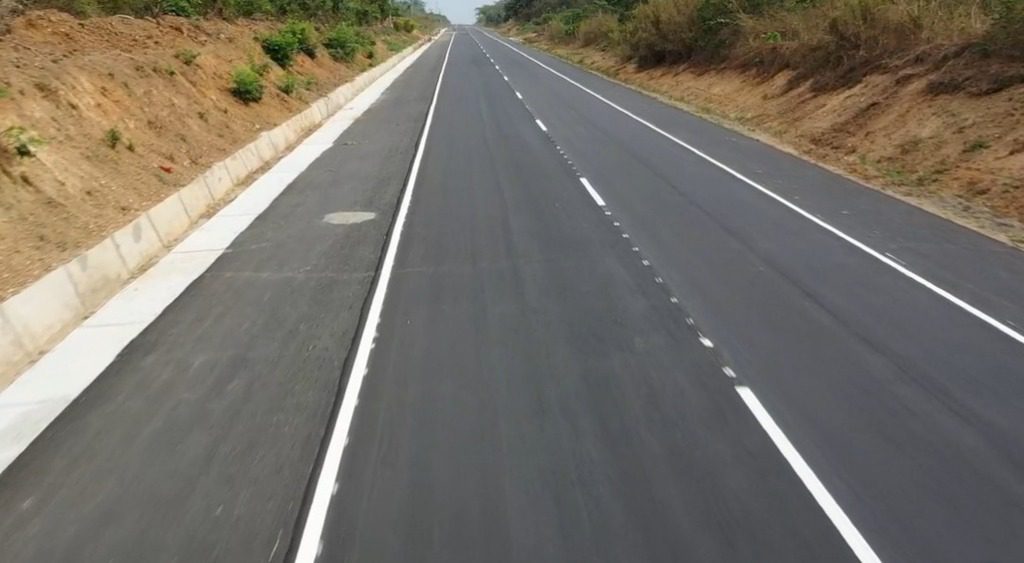
Extension of the existing culverts to cater for the widening of the road, and construction of new culverts of various sizes to improve the drainage conditions was also done.
Construction of 2,600m u-drains of varying sizes in the communities along the route and 9,356m trapezoidal drains of varying sizes in towns and at the foot of cut sections and on high gradients, overlay with 40mm wearing course and 40mm binder course and provision of road furniture and safety features were added.
At the ceremony to grace the occasion was the Chinese Ambassador to Ghana Lu Kun, Oti Regional Minister, Dr. Joshua Makubu, Kwasi Amoako- Attah(MP) and Minister for Roads and Highways, Officials of the Roads Ministry and Agency heads under the Ministry plus eminent traditional leaders and other invited guests.
